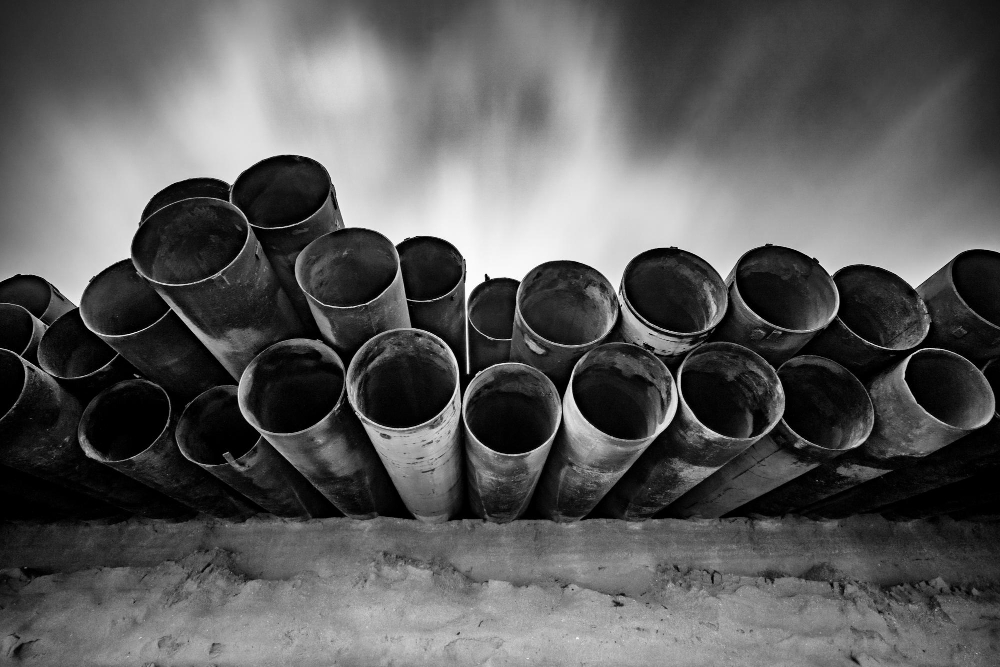In modern construction, understanding the foundation upon which structures stand is as crucial as the design itself. Piling is a key component in building strong, durable foundations—a technique that not only supports but also fortifies buildings against the tests of time and nature. With a focus on “pipe and piling supply,” we get into the various types of piles, their construction methods, and their pivotal role in construction projects. Whether you’re a seasoned engineer or a curious enthusiast, this guide offers valuable insights into the world of piling.
Piling- The Backbone Of Construction
Piling forms the backbone of construction, offering a robust solution for transferring the load of a structure to the underlying soil or rock layers. Piling forms the bedrock of the construction process, a method where pile foundations are meticulously driven or bored into the earth beneath an ongoing construction site. These critical components act as conduits, channeling the structural loads into the ground, thereby bolstering the building’s stability. Especially in scenarios where the surface soil lacks the necessary strength, the introduction of pile foundations is non-negotiable. This process is particularly crucial in areas where the surface soil lacks the strength to support the structure. By employing a “pipe and piling supply,” contractors ensure the longevity and stability of the construction.

Understanding Pile Foundations
Pile foundations, crafted predominantly from steel or reinforced concrete, are slender yet robust elements designed to penetrate through weaker, compressible layers down to the firmer, unyielding soil or rock strata below. This deep penetration guarantees a solid foundation essential for the successful realization of construction endeavors. The strategic use of pipe and piling supply in creating these foundations underscores modern construction practices’ commitment to durability and stability.
The Historical Evolution Of Piling
Ancient civilizations traced back the genesis of piling, sparked by the necessity for stable construction on challenging terrains, showcasing remarkable ingenuity. Historical accounts reveal that around 6000 years ago, inhabitants near Swiss rivers elevated their homes on piled foundations to safeguard against floods and invasions. Similarly, the Romans advanced the practice by implementing piles in their shore works across Europe, including using timber piles for bridge construction in London and Corbridge over two millennia ago. These early adaptations of piling highlight humanity’s enduring endeavor to overcome environmental challenges, setting the stage for the sophisticated pipe and piling supply systems that underpin today’s construction industry.
In the pursuit of expansion and development, ancient and modern civilizations have faced the dilemma of constructing on less-than-ideal terrains, notably near water bodies. That necessitated the evolution of piling as a fundamental construction technique. Initially, timber piles were manually driven into the earth, or holes were excavated and backfilled with a mix of sand and stones to create a stable base. As urbanization pressed on, the demand for robust construction on lands with poor soil quality surged, cementing the role of piling as a critical component of the construction sector. The modern era’s reliance on pipe and piling supply mirrors the historical dependency on piling to meet the ever-growing demands of infrastructure and building projects.
Types Of Pipe Piling
The primary categories of piling can be distinguished as end-bearing and friction piles.
- End-bearing piles function by channeling the structure’s load into a sturdy layer of soil or rock located at a significant depth beneath the ground surface.
- On the other hand, friction piles work by leveraging the frictional force generated between the pile’s exterior and the soil encompassing it throughout its entire length, effectively dispersing the load.
Diverse Methods, Unified Strength: Types Of Pile Foundations
Pile foundations represent the bedrock of modern construction, offering unparalleled support to structures by transferring loads to stable soil layers beneath. This critical distinction between the pile foundation and the individual piles—columns or cylinders driving deep into the ground—underscores their collective role in bolstering construction projects against the challenges of weak surface soils.
The construction landscape showcases a spectrum of pile foundation methods, each tailored to meet specific project needs and ground conditions. Whether through driving or boring, selecting a pile foundation strategy hinges on its ability to provide robust support, with pipe and piling supply playing a pivotal role in ensuring quality and durability.
- Driven Piles: The Traditional Titans- Driven piles stand as the time-honored approach to pile foundation, with materials ranging from timber, a testament to ancient engineering wisdom, to modern precast concrete and steel. This method excels in displacing soil equivalently, enhancing soil strength around the pile. However, its efficacy diminishes in saturated or silty soils, where slow drainage hampers soil compaction. The versatility of pipe and piling supply shines here, offering materials that withstand the rigors of driving and deliver lasting support.
- Bored Piles: The Precision Crafted- Bored or drilled piles emerge as the solution when precision is paramount, particularly effective in transferring structural loads to deeper, more stable soil strata with minimal settlement. This method’s adaptability is evident in its application, from creating under-reamed bulbs for enhanced support to employing rotary boring in obstacle-laden terrains. Here, the significance of pipe and piling supply is unmistakable, providing the steel reinforcement and concrete necessary for bored pile construction.
- Driven vs. Bored Piles: A Comparative Analysis- The dichotomy between driven and bored piles illuminates the diversity of piling methods. Driven piles, prefabricated and quickly installed, offer rapid construction but are limited by the vibrations they produce, making them less suitable for compact sites. Conversely, bored piles, though more time-consuming, excel in vibration-sensitive areas, offering higher bearing capacities and resistance to seasonal disruptions. The choice between these methods reflects a balance of project requirements and environmental considerations, with pipe and piling supply central to both approaches.
- Hybrid Innovations: Driven and Cast In-Situ Piles- This method combines fast installation of driven piles with the robustness of cast-in-situ construction, highlighted by the permanent casing technique. Here, a steel casing provides the mold for concrete filling, creating a composite pile that leverages the benefits of both materials. Pipe and piling supply contribute significantly, offering the casings and concrete essential for this innovative approach.
- Aggregate Piles: The Ground Optimizers- Aggregate piles, or stone columns, introduce a method focused on soil improvement rather than traditional pile support. These piles enhance soil-bearing capacity by inserting compacted aggregate into bored holes through displacement and densification. The role of pipe and piling supply also extends into this method, providing the casings and aggregate materials needed to construct these soil-strengthening pillars.
The Craft Of Pile Construction And Installation
In the construction, the introduction of piles into the ground is a critical step in establishing a robust foundation for any structure. The machinery employed in this process, predominantly track-mounted, is specialized to accommodate specific pile types. When it comes to driven piles, the industry relies on a variety of methods to ensure their secure placement. Techniques involve hammering, jacking, or vibrating the piles into position, utilizing tools such as percussion hammers, hydraulic drivers, or vibratory drivers powered by diesel. These methods are designed to decrease resistance from the surrounding soil, facilitating the smooth insertion of the pile.
For bored piles, the approach is akin to using an oversized drill bit, with diameters ranging from 300mm to 900mm. In instances where larger diameters are necessary, bits up to 1200mm come into play. The equipment required for this task is notably hefty, with some rigs tipping the scales at 180 tonnes. The precision in utilizing pipe and piling supply during this phase is paramount, ensuring the foundation’s structural integrity.
Piling’s Role In Bridge Construction
The construction of bridges, whether over land or water, presents a unique set of challenges that piling techniques adeptly address. Adjacent to bridge abutments, piles are crucial for imparting the necessary foundation strength, a testament to the strategic use of pipe and piling supply in these scenarios. Over water, the complexity increases, necessitating the creation of a cofferdam to forge a dry working environment for pile installation. This ingenious solution underscores the adaptability of piling methods in facing the elements.
The Imperative Of Safe Working Platforms
The operation of piling rigs, with their varying sizes and capabilities, hinges on a reliable piling platform. This base must be robust enough to support the machinery, achieved through compacting a layer of granular fill to a precise depth. In some cases, materials for the platform are sourced externally, while in others, repurposed demolition rubble from the site serves the purpose, especially in brownfield developments.
The design and maintenance of these platforms are critical, demanding expertise in engineering to accurately anticipate the loads and stresses involved. That ensures the stability of the piling rig during operation, mitigating the risk of bearing failures and minimizing settlement. Regular inspections and maintenance are recommended and essential, safeguarding against potential hazards. The industry’s focus on safety, underscored by the emphasis on pipe and piling supply, highlights the importance of diligence in every phase of piling work.
Take Your Construction Projects To New Heights
Elevate your construction projects with the unparalleled expertise and quality of Bigfoot Pipe And Piling. Our comprehensive range of pipe and piling supply solutions ensures you have everything you need for a solid foundation. We offer top-notch materials and support to streamline your construction process. Whether you’re a seasoned professional or embarking on your first project, trust us to deliver excellence every step of the way. Don’t settle for subpar supplies – partner with us and build with confidence.
